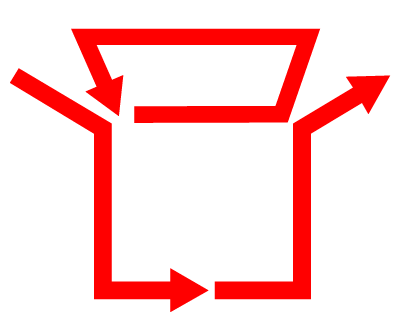
How can design make a circular future more accessible and attractive to all?
The Make it Circular Challenge called on designers, creative entrepreneurs and startups from around the world to envision and build a circular society.
From a total of 650 entries worldwide, the shortlist features exciting innovations that prevent waste by rethinking our way of life: from what we eat and wear, to how we build, package and buy. Representing ideas from creatives in 20 different countries, these 50 nominees will now move on to the final round of the competition. On 3 May, we’ll find out which 13 most promising projects will be crowned this year’s winners.
Why this challenge now?

The challenge
Today, the climate crisis is impossible to ignore. Millions of people are already experiencing the effects of a warming planet firsthand, but scientists say there’s still a small window to act. According to the Paris Agreement, we could keep global heating below 2 degrees celsius if we manage to eliminate carbon emissions by 2050.
But of course, carbon emissions are not the cause of the problem. They are symptoms of a broken system — one that is based on the linear economy, and is reflected in the way we make our products, grow our food and build our cities.
The good news? We can address these challenges head-on by making the shift to a circular economy, which embeds resources in cycles rather than straight lines. It aims to prevent the creation of waste by keeping products and materials in use for as long as possible, and promoting processes that regenerate natural systems.
If we can make this vision a reality, we give ourselves a fighting chance at tackling the root of the climate crisis, and securing a liveable future for both people and planet.
Why designers?
Trendsetters and tastemakers
As trendsetters and tastemakers, we believe that designers are in a unique position to apply circular strategies at scale. Whether they work in advertising, packaging or architecture, creatives are usually trained to approach complex challenges in a collaborative and courageous way.
Besides rethinking how things are made, it is also critical that we reform societal values and attitudes. Because design has always played a pivotal role in shaping consumer culture — for better and for worse. The only question is: how different could our lives be, if we used its power for good?

What is circular design?
What is circular design?
Circular design is the creative engine of the circular economy. It is a framework that allows us to change the way we make and use things: from quick fixes to long-term solutions, from exploiting nature to collaborating with nature, from creating new materials to using what we already have.
Whether you are designing a disruptive new product, a campaign that shifts cultural values, or a service that makes sustainable living easy, we invite you to reflect on these three key aspects of circular design.
Design to last pushes creatives to take the long view. What is designed today needs to last for a long time: 50 years rather than five. What kind of environmental and social impact will your design have on future generations? How can you design for resilience and adaptability, rather than speed or profit?
Work with nature champions a more-than-human approach to design. It encourages designers to learn from the natural world, where all systems are inherently circular and interconnected. How can this inspire a more symbiotic relationship between humanity and all other life on the planet?
Use what exists reminds designers to make the most of the resources, materials, and knowledge that we already have. To close the loop from both ends, a lot of innovation must happen within these ‘limits’. How do strategies like recovering, reusing, repairing and regenerating play a part in your design?

Winner of our previous challenge - Reparar.org V2.0 is an online repair directory making it easy to find local repairers while promoting a culture of care across Latin America.
The Five circular ways of living

5 circular ways of living
While this Challenge is open to innovations of all kinds, we ask all participants to indicate how their project relates to the five largest value chains in the world. Which category fits your project best? And how does it create or support circular ways of living?

How we package
Asks you to rethink the flawed world of packaging. It is vital that we find better ways to protect our food and products using materials that are truly ethical and sustainable. Systems also need to be redesigned to ensure that these innovations can be implemented at scale.

How we build
Reimagines the built environment and looks at how we construct the places where we live, work and play. This includes making circular decisions in new buildings for the growing population but also initiatives to adapt existing structures and save precious resources.

What we eat
Covers the ways we grow, distribute, shop for, consume and discard food. Strategies could include rethinking farming practices, redesigning the modern diet, or creating initiatives that encourage food sharing within communities.

What we wear
Is about the clothes we put on our bodies and the textiles from which they are made. The goal here is to change the way we value these materials and embed fair and sustainable practices for their production, use and reuse.

What we buy
Includes all of the consumer goods we use every day, from furniture to toys, home cleaning products and cars. The challenge is to design circular systems for these products to exist in, while also addressing why we buy in the first place.
